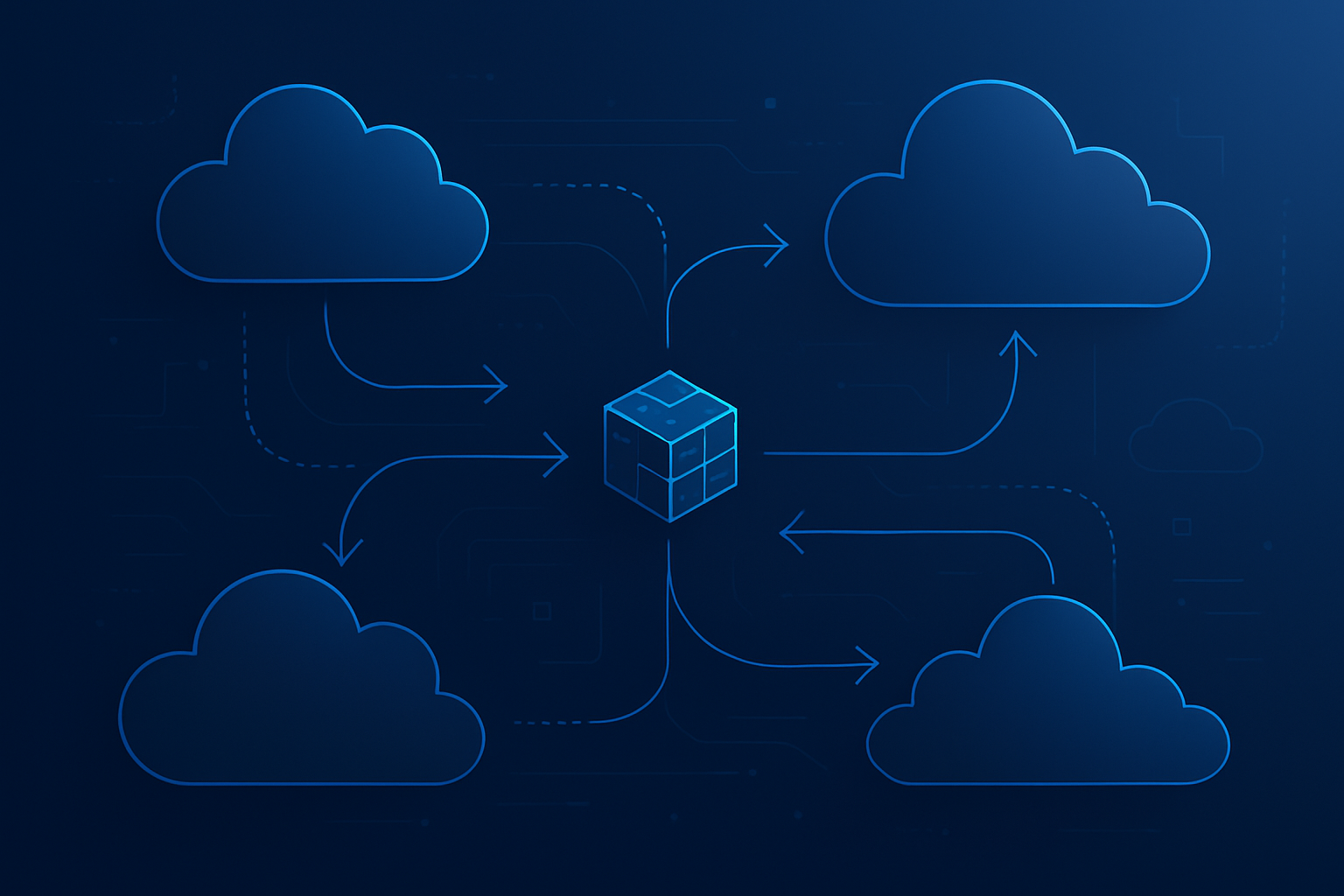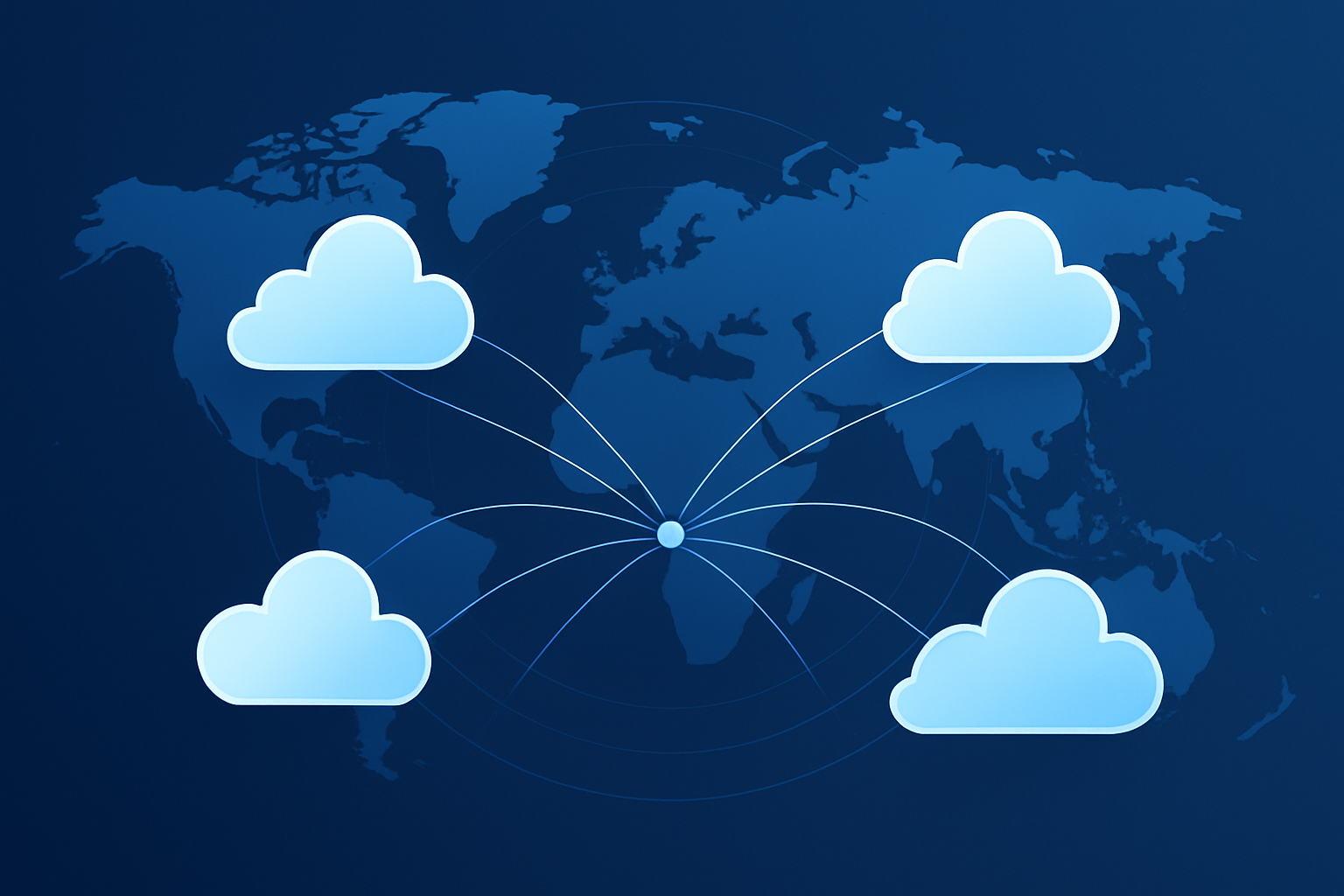How to Escape Cloud Lock-In | 매거진에 참여하세요
How to Escape Cloud Lock-In
#Multicloud #CloudOps #DR #FinOps #MCMP #CloudStrat
Just a few years ago, migrating to the cloud was a major innovation.
But times have changed. Now, keeping all your workloads in a single cloud provider—be it AWS, Azure, or Google Cloud—can pose a serious risk.
Welcome to the era of Multi-Cloud.
What Is Multi-Cloud, Really?
Multi-cloud means using two or more cloud providers simultaneously to run different workloads.
You might run your core app on AWS, use Google Cloud for machine learning, and host internal tools on Azure.
This is different from hybrid cloud, which typically combines on-premise infrastructure with one public cloud. Multi-cloud is public cloud × N.

Why Companies Go Multi-Cloud
1. Avoiding Vendor Lock-In
Cloud providers can—and do—change prices, policies, and SLAs. Outages happen.
Relying on one provider can be risky. Multi-cloud spreads that risk.
2. Leverage the Best of Each Platform
- AWS: reliable infrastructure
- GCP: top-tier data & AI services
- Azure: deep enterprise integrations (e.g., Microsoft 365)
Why not use all of them for what they’re best at?
3. Regulatory and Geographical Distribution
Some industries (finance, healthcare) or countries mandate that data stays local.
Multi-cloud allows companies to meet these compliance demands without compromising global reach.
4. Resilience and Disaster Recovery
If one cloud goes down, others can pick up the slack.
Multi-cloud improves fault tolerance and enables more robust disaster recovery (DR) strategies.
But It’s Not Just Plug-and-Play
Running workloads across clouds isn’t just a matter of opening multiple accounts. A successful strategy demands:

Clear Workload Distribution
Which services go where? What are your criteria—cost, performance, security?
Optimized Cross-Cloud Networking
Latency and egress costs between providers can eat you alive. You need solid networking architecture.
A Multi-Cloud Management Platform (MCMP)
One dashboard to monitor, control, and secure everything—without losing your sanity.
Consistent Security Policies
IAM, RBAC, encryption, and compliance rules must stay consistent across clouds. Fragmentation = risk.
Who’s Actually Doing This?
- Netflix runs most infrastructure on AWS, but offloads select services to GCP.
- Finance companies in Korea combine local CSPs (like KT or NHN) with global providers to meet data residency rules.
- Gaming firms use region-specific cloud edges to minimize latency for global players.
The Downside: Yes, There Are Tradeoffs
❗ Complexity
More providers = more tools, APIs, UIs, billing formats, and configs.
❗ Cost Predictability
Each CSP bills differently. Forecasting cloud costs across providers is… tricky.
❗ Skilled Talent Required
Every cloud platform is its own universe. DevOps engineers must master multiple clouds.
Why MCMP Is the Backbone of Multi-Cloud
Managing clouds individually is a recipe for chaos. MCMP provides a unified control plane,
giving visibility into who’s running what, where, and at what cost.
Without MCMP, you’ll face:
- Resource sprawl and duplication
- Billing surprises
- Policy misalignments
- Sluggish disaster response
What MCMP Tools Actually Do
Function | Description |
|---|---|
Unified Console | Monitor VMs, storage, and networks across CSPs |
Infrastructure Automation | Use IaC tools like Terraform or Pulumi to deploy |
Centralized IAM | Manage roles and permissions in one place |
Cost Optimization (FinOps) | Detect idle resources and monitor usage |
DR & Failover Management | Shift workloads to other clouds during outages |
Security & Compliance | Monitor policies and alerts across clouds |
Multi-cloud Networking | Optimize data flow and egress charges |
Leading MCMP Tools
- VMware Aria: Great for hybrid (on-prem + cloud) setups
- Google Anthos / Red Hat OpenShift: Kubernetes-based app portability across clouds
- HashiCorp Terraform Cloud: IaC across all major CSPs
- Flexera CMP: Focused on visibility, asset management, and security
Anatomy of a Real-World Multi-Cloud Setup
Imagine a global SaaS company. Their multi-cloud stack might look like this:
Step 1: Workload Classification
Customer data → AWS (Seoul region for compliance)
ML pipelines → GCP (AI Platform)
Internal systems → Azure (linked to M365)
Step 2: IaC Standardization
Terraform scripts define resources per CSP
GitOps manages deployment pipelines
Step 3: MCMP Integration
Anthos or Aria handles central dashboards
Okta or Auth0 standardizes authentication across platforms
Step 4: FinOps SaaS
CloudHealth, Flexera, or Spot.io for cost control
Alerts for abnormal spending spikes
Step 5: Monitoring & Logs
Prometheus + Grafana for metrics
CloudTrail, Cloud Logging → routed to central SIEM
Multi-Cloud Done Right Starts With Governance
To actually benefit from multi-cloud (and not drown in it), you need to lock down these three foundations:
1. Unified Governance
Use tools like Okta or Auth0 to unify IAM policies across clouds.
2. IaC Adoption
Terraform or Pulumi are your best friends. Manual clicks are not scalable.
3. FinOps Integration
Set alerts, auto-cleanup unused resources, and track spend in real-time.
Final Thoughts
Multi-cloud is no longer an advanced strategy—it’s the new normal. But with great power comes great… complexity.
From MCMP orchestration to FinOps recommendations, bunzee helps you stay in control—even when your infrastructure spans the globe.
Don’t just go multi-cloud. Go smart multi-cloud.
Multi-cloud ideas from bunzee.ai






